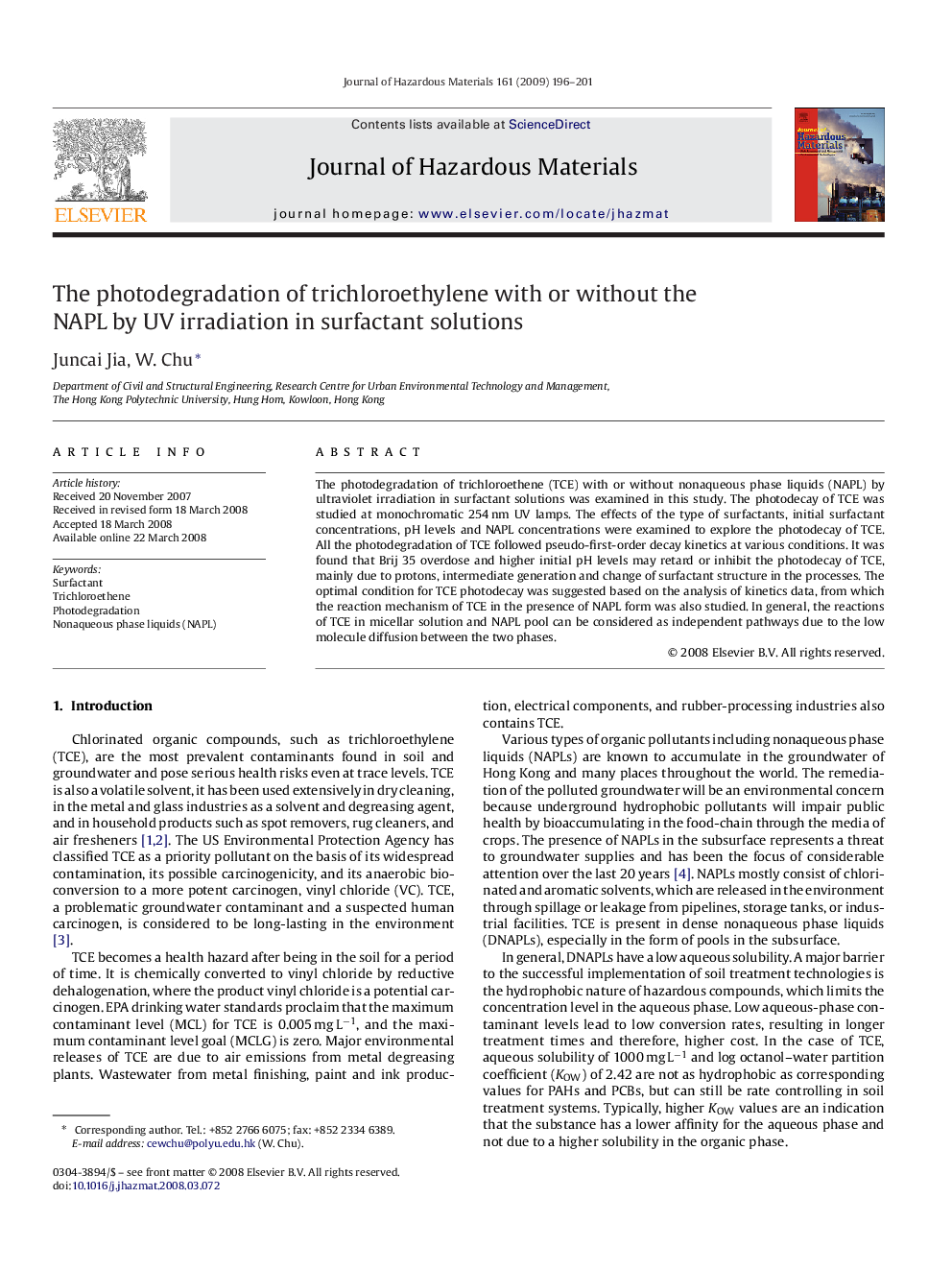| Article ID | Journal | Published Year | Pages | File Type |
|---|---|---|---|---|
| 581481 | Journal of Hazardous Materials | 2009 | 6 Pages |
Abstract
The photodegradation of trichloroethene (TCE) with or without nonaqueous phase liquids (NAPL) by ultraviolet irradiation in surfactant solutions was examined in this study. The photodecay of TCE was studied at monochromatic 254Â nm UV lamps. The effects of the type of surfactants, initial surfactant concentrations, pH levels and NAPL concentrations were examined to explore the photodecay of TCE. All the photodegradation of TCE followed pseudo-first-order decay kinetics at various conditions. It was found that Brij 35 overdose and higher initial pH levels may retard or inhibit the photodecay of TCE, mainly due to protons, intermediate generation and change of surfactant structure in the processes. The optimal condition for TCE photodecay was suggested based on the analysis of kinetics data, from which the reaction mechanism of TCE in the presence of NAPL form was also studied. In general, the reactions of TCE in micellar solution and NAPL pool can be considered as independent pathways due to the low molecule diffusion between the two phases.
Related Topics
Physical Sciences and Engineering
Chemical Engineering
Chemical Health and Safety
Authors
Juncai Jia, W. Chu,
